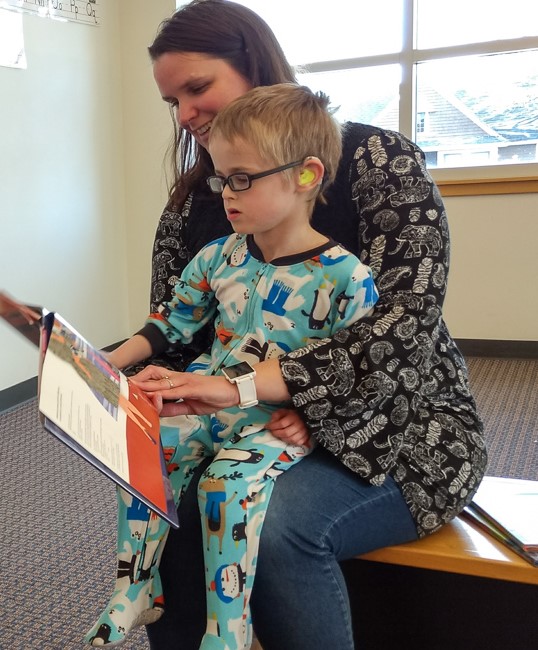Literacy
Literacy generally refers to the ability to read and write—symbolic systems that allow people to receive and send information across distances of time and space and transmit knowledge from one generation to another.

For children and youth who are deaf-blind, we need to expand our conventional ideas about reading and writing to include emergent literacy and different methods of accessing written materials.
Emergent literacy refers to abilities that typically precede formal reading and writing such as:
- Attending to objects or pictures during familiar activities
- Beginning to understand that people and objects have names
- Showing an interest in stories
- Handling, mouthing, or other types of non-traditional exploration of books
Different methods of accessing written materials include braille, large print, and assistive technologies.
Each person who is deaf-blind—whatever her sensory, mental, and physical abilities—deserves the opportunity to become literate in all the ways of which she is capable. Reading and writing are especially crucial for one whose world is narrowed because of vision and hearing losses. Literacy can enable such a person to exchange information and ideas, and develop relationships that would otherwise be out of reach. (Miles, 2005)
Introductory Resources
Learn More
Websites
Literacy for Children with Combined Vision and Hearing Loss (NCDB)
Learning Module
Literacy for Children Who Are Deaf-Blind: Building a Foundation Module (NCDB)
Webinars and Videos
Accessible Books and Literacy: Supporting and Encouraging a Love for Literacy (Perkins)
Early Literacy for Students with Multiple Disabilities or Deafblindness (Perkins)
Literacy For Us: Developing a Foundation for Literacy in Children with Deaf-Blindness (Video)
References
Deaf-Blind Network Literacy Work Group. (2014). Steps to literacy.
Miles, B. (2005). Literacy for persons who are deaf-blind. DB-LINK: The National Information Clearinghouse on Children who are Deaf-Blind.
KEEP EXPLORING